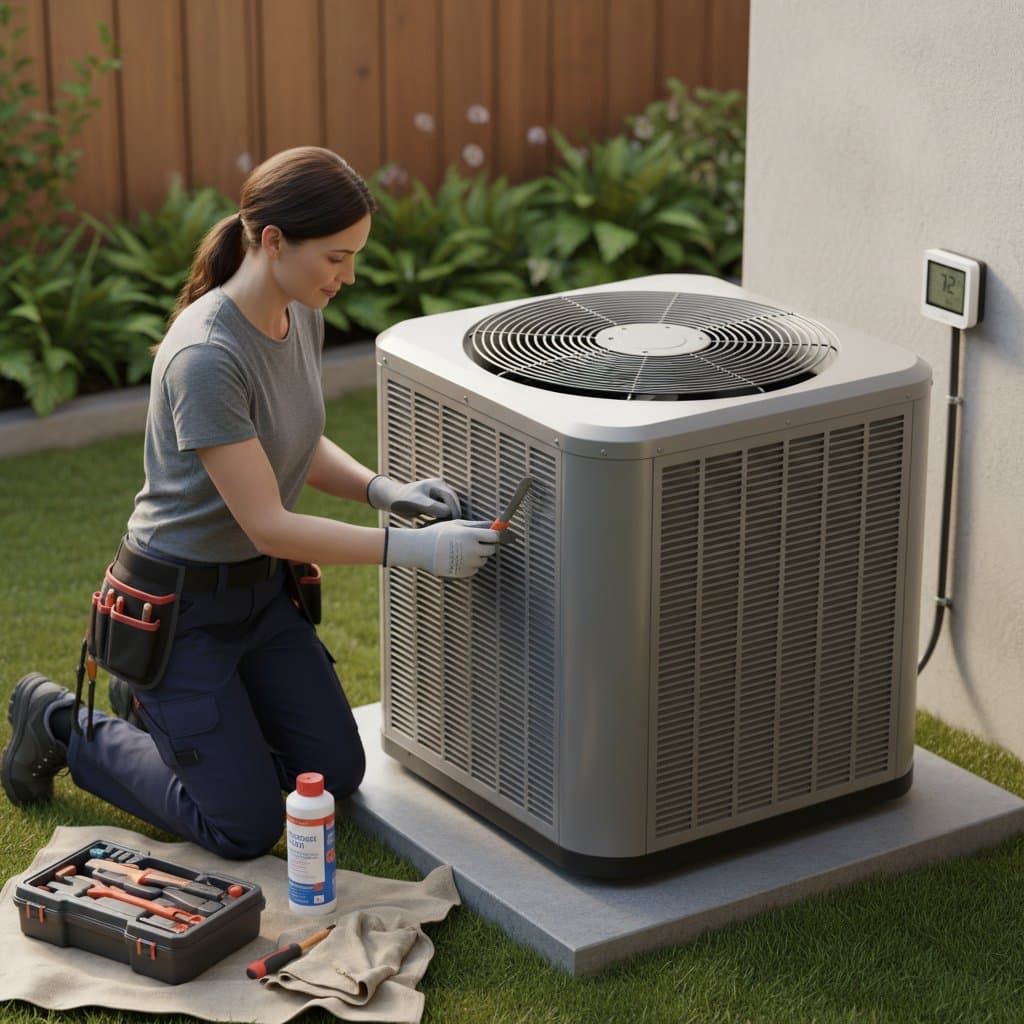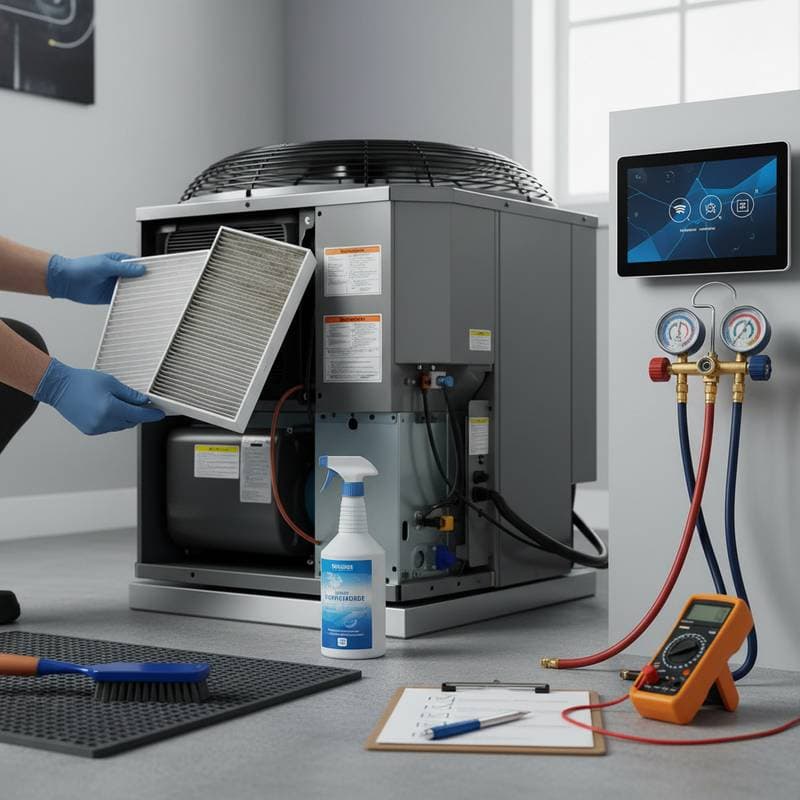Avoid Costly Winter HVAC Woes with Fall Prep Checklist
When cold weather arrives, many homeowners encounter heating problems that proper preparation could have averted. A strategic fall HVAC tune-up minimizes unexpected failures, elevated energy expenses, and potential safety risks. This guide provides a comprehensive checklist to ensure your furnace and heating system perform reliably throughout the winter.
Why Fall HVAC Maintenance Matters
Heating systems operate under maximum demand during low temperatures. Accumulated dust, debris, and component wear from summer activity diminish efficiency. Neglecting maintenance allows minor faults to escalate into expensive fixes.
Seasonal inspections in fall detect issues promptly and enhance overall comfort. A maintained system consumes less energy, operates securely, and prolongs equipment durability. Property owners who perform routine tune-ups experience reduced emergency interventions and decreased winter utility charges. Investing time now avoids prolonged inconvenience during peak cold periods.
Key Benefits of a Fall HVAC Tune-Up
-
Better Energy Efficiency
Clean filters, properly lubricated components, and accurately calibrated thermostats facilitate unrestricted air circulation. These measures decrease operational stress on the furnace and reduce monthly energy costs. -
Longer System Life
Proactive maintenance minimizes deterioration of critical parts. Regular examinations and adjustments extend the service life of motors, belts, and other elements. -
Improved Air Quality
Ducts often harbor dust, mold, and allergens from pets. Thorough cleaning and filter replacements enhance indoor air purity, benefiting all household members. -
Fewer Breakdowns
Inspections reveal vulnerabilities like deteriorated igniters or insecure wiring. Addressing these proactively averts disruptions during harsh weather. -
Safety Assurance
Professionals evaluate for gas leaks, carbon monoxide hazards, and proper ventilation. Such verifications safeguard both the home and its occupants.
Complete Fall HVAC Prep Checklist
Follow this detailed sequence to ready your heating setup for winter demands. Each action promotes optimal performance, user comfort, and hazard prevention.
1. Replace or Clean Filters
Clogged filters impede airflow and compel the furnace to overexert. Swap out disposable types or wash reusable variants at least once monthly while heating is active. Select filters boasting a MERV rating of 8 to 13 for superior particle trapping, ensuring compatibility with your unit to avoid airflow restrictions.
2. Inspect the Thermostat
Verify that thermostat configurations align with desired indoor temperatures. For outdated manual devices, evaluate upgrading to programmable or smart models. Advanced thermostats sustain consistent climates and optimize energy use during absences or sleep.
3. Clear Vents and Registers
Obstructed vents lead to imbalanced warmth distribution. Survey each room to confirm that no furnishings, carpets, or fabrics obscure outlets. Use a vacuum to dislodge accumulated dust and fur, restoring full ventilation capacity.
4. Check Carbon Monoxide Detectors
Fuel-burning heaters generate carbon monoxide as a byproduct. Activate detectors monthly and install fresh batteries annually. Position units in bedrooms and hallways; discard any past their three-to-five-year lifespan or exhibiting faults.
5. Examine the Furnace Area
Maintain unobstructed surroundings for the furnace, free from storage items or flammable materials. Such clutter heightens fire dangers and hampers ventilation. An accessible zone also simplifies professional servicing.
6. Inspect Ductwork
Scan for separated seams or apparent breaches in ducts. Apply aluminum foil tape or mastic compound to seal imperfections securely. If excessive dust or diminished vent output persists, arrange for expert duct cleaning to eliminate deep-seated contaminants.
7. Schedule a Professional Tune-Up
Engage a licensed specialist to assess burners, sanitize heat exchangers, verify fuel pressure, and gauge air velocity. They secure electrical links and validate ignition sequences. Request a documented summary of observations to monitor annual progress.
8. Test the System Early
Prior to sustained cold, activate the furnace briefly to assess functionality. Note any unusual noises, odors, or performance irregularities. This preliminary run allows ample opportunity for corrective actions before intensive operation.
Cost Insights and Savings Tips
Routine tune-ups typically range from $75 to $200, a fraction of the $500 to $5,000 associated with urgent repairs. Consistent care substantially diminishes the likelihood of such expenditures. Explore annual service contracts that bundle inspections with perks like component discounts and expedited support.
Efficiency analyses indicate that well-maintained furnaces achieve up to 25 percent greater fuel utilization compared to overlooked units. This improvement yields tangible reductions in bills and eases environmental impact through lower consumption.
Expert Advice from Homeowners and Technicians
Forum discussions among homeowners consistently emphasize the value of preemptive action. One contributor described how a fall evaluation uncovered a fractured heat exchanger, enabling timely and safe substitution ahead of winter. Another reported noticeable dust decline post-duct servicing, enhancing home cleanliness rapidly.
Service professionals attribute most winter malfunctions to deferred upkeep. They recommend calendar alerts for annual scheduling to preserve warranties and sustain peak efficiency. Adhering to this practice ensures dependable performance year after year.
Safety Warnings You Should Never Ignore
- Never block return air vents with furniture or curtains. Restricted circulation risks furnace overheating and component damage.
- Turn off power before attempting maintenance near moving parts like fans.
- Avoid DIY gas line adjustments. Certified experts alone manage fuel systems to prevent leaks or explosions.
- Watch for signs of trouble like burning smells, rattling noises, or frequent on-off cycles. Summon a technician immediately upon detection.
Incorporating these precautions into your protocol averts dangers and maintains a secure environment during frigid conditions.
Ensuring Year-Round Heating Reliability
By completing this fall checklist, you position your HVAC system for seamless winter operation. These steps not only avert breakdowns but also foster long-term savings and peace of mind. Commit to seasonal reviews to enjoy consistent warmth without interruptions.





